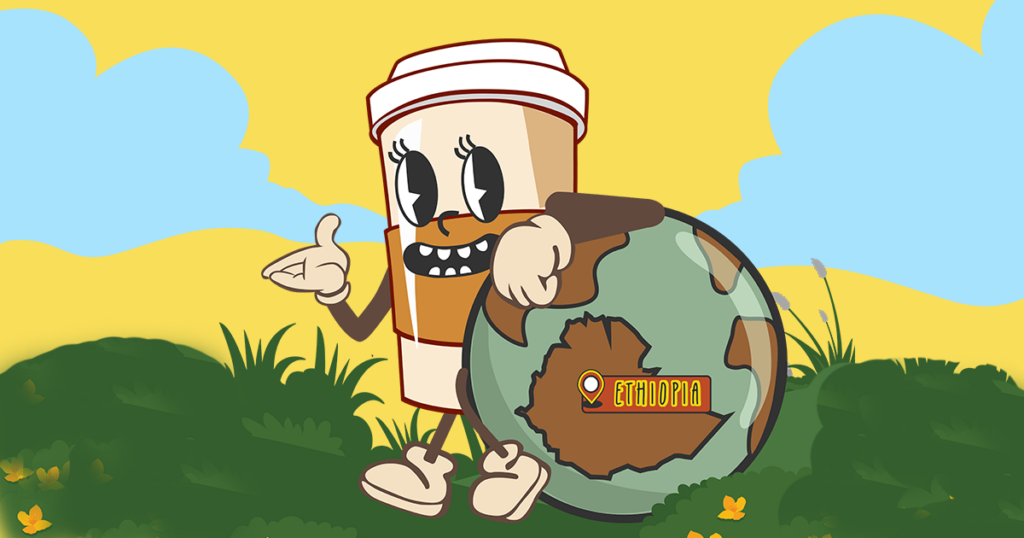Are you one of those folks who can’t start the day without a good cup of coffee? That first sip in the morning, the one that clears the fog and sets the tone for the day—there’s something special about it. But have you ever wondered where that magical bean comes from? Let’s dive into the rich, storied origins of coffee, a drink that’s woven into the fabric of our daily lives.
The legend begins in Ethiopia around 850 AD with a goat herder named Kaldi. He noticed that his goats became unusually lively after eating red berries from a certain tree. Curious, Kaldi tried the berries himself and felt a burst of energy. He shared his discovery with a local monk, who made a drink from the berries and found it helped him stay awake during long prayers. This news spread quickly, and coffee began its journey around the world.
Coffee first took root on the Arabian Peninsula, where it quickly became much more than just a drink—it became a cornerstone of daily life by the 15th century. People in the region embraced coffee not only for its energizing effects but also for the social connections it fostered. Public coffee houses, known as qahveh khaneh, started popping up in cities across the peninsula, and they soon became the heart of community life. These coffee houses weren’t just places to enjoy a warm beverage; they were bustling hubs of activity where people from all walks of life gathered to talk, share ideas, and engage in lively debates. Known as “Schools of the Wise,” these establishments were revered as spaces where knowledge, stories, and wisdom flowed as freely as the coffee itself, making them integral to the cultural and intellectual fabric of the time.
When coffee made its way to Europe in the 17th century, it quickly became a widespread sensation, capturing the curiosity and taste buds of many. However, its introduction was not without controversy. The dark, bitter brew was met with skepticism by some, who viewed it with deep suspicion and even referred to it as the “bitter invention of Satan.” This new beverage, so different from the familiar beers and wines of the time, seemed almost unnatural to a portion of the population, leading to widespread fear and doubt.
The situation became so contentious that local clergy in Venice called for its condemnation. With tensions rising, they turned to Pope Clement VIII for a final ruling on whether this strange drink should be banned. But instead of dismissing it outright, the Pope decided to taste it for himself. After sampling the brew, he was reportedly so delighted by its rich flavor that he gave it his full approval, declaring that coffee was, in fact, a drink worth enjoying.
With the Pope’s blessing, coffee’s popularity surged, and coffee houses began springing up in major cities across Europe. These establishments quickly became vibrant social centers, where people gathered not only to drink coffee but to engage in lively conversations, debate ideas, and exchange news. Coffee houses turned into buzzing hubs of intellectual activity, fostering the kind of stimulating discussions that would shape the culture and politics of the time. In a short time, coffee had transformed from a suspicious curiosity into an integral part of European social life.
Coffee made its way to the New World in the mid-1600s, brought over by European settlers who had already grown fond of the beverage. However, during this time, tea was still the favored drink among the colonies, a preference passed down from their British roots. But in 1773, everything changed with the infamous Boston Tea Party. When the colonists, protesting the hefty taxes imposed by King George III, dumped an entire shipment of tea into Boston Harbor, it not only sparked the American Revolution but also signaled the beginning of the nation’s shift away from tea. In the wake of this event, coffee swiftly rose to prominence as the patriotic alternative, and it wasn’t long before it became America’s beverage of choice. From that point on, coffee was no longer just a drink—it was a symbol of independence and defiance, forever tied to the country’s evolving identity.
As the love for coffee spread across the New World, so too did the race to cultivate it. European nations, eager to capitalize on the growing demand, began competing to establish coffee plantations. The Dutch were among the first to succeed, establishing thriving coffee crops on the island of Java in present-day Indonesia. Their success set off a chain reaction, with other colonial powers following suit, eager to carve out their own slice of the lucrative coffee trade.
One of the most famous stories from this era involves Gabriel de Clieu, a daring French naval officer who, in 1723, embarked on a perilous journey to transport a coffee seedling to the Caribbean island of Martinique. His mission was fraught with challenges, from treacherous storms to pirate attacks, and even sabotage from a fellow passenger intent on destroying the precious seedling. Despite these obstacles, de Clieu successfully protected the plant, ensuring its safe arrival in Martinique. Once planted, the seedling thrived beyond anyone’s expectations, and within a few decades, it became the parent of millions of coffee trees, not just in Martinique but throughout the Caribbean, South, and Central America. Thanks to this single plant, entire coffee economies sprang up in the Americas, forever shaping the landscape of global coffee production.
Today, coffee is more than just a beverage—it’s a global staple enjoyed by millions, cutting across cultures, time zones, and borders. Whether it’s a morning ritual, a break in a busy day, or a reason to gather with friends, coffee has become an integral part of daily life for people everywhere.
So, the next time you savor your morning cup, take a moment to appreciate that it’s more than just a drink in your hand. You’re participating in a tradition that’s woven through centuries of history, connecting you to farmers, traders, and coffee lovers from every corner of the earth. Coffee is more than just a boost of energy—it’s a rich legacy brewed into every sip.

